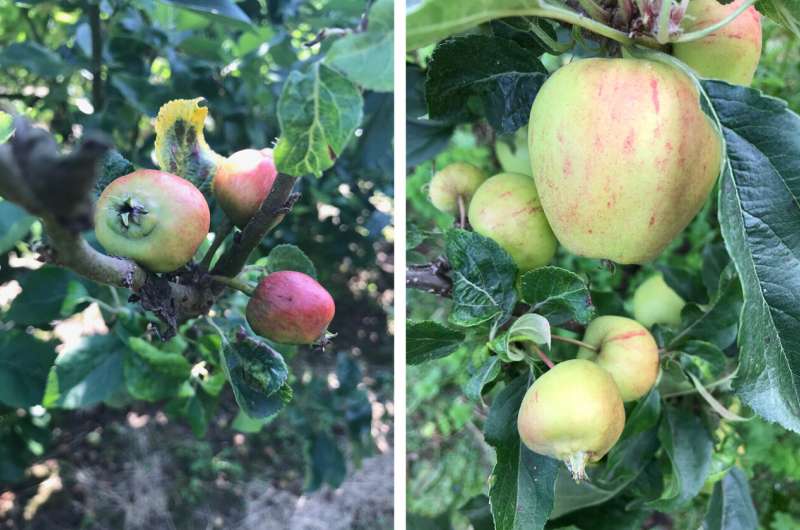Predatory insects protect apples from pests when flowers are planted on farms, finds study

Bugs including hoverflies, lacewings and ladybirds play an important role in keeping Britain's apples healthy, a new study has shown.
Wildflower strips planted around apple orchards provide a habitat for predatory insects that prey on pests that deform and damage apples.
Flower margins had been established next to five dessert apple orchards in the U.K. A research team led by the University of Reading found that only 48% of trees had fruit damage compared to 80% in orchards without flowers.
In 2020, 200,000 metric tons of dessert apples worth £158 million were produced in the United Kingdom. The two-year study, published in the Journal of Applied Ecology, suggests farmers could harvest up to an additional 2,420 kg per hectare (6.9%) of undamaged, premium apples by installing flower margins on orchards.
Lead author Charlotte Howard, from the University of Reading, said, "By looking after our creepy crawlies, we can take better care of our apples. Planting flower margins near fruit trees is a sustainable way of preventing damage to crops as it reduces reliance on insecticides. We will get more good bugs on farms and better British food in supermarkets as more flower strips are added next to orchards."
Good margins for better harvests
The study utilized large, mature wildflower margins more than five meters wide and included grasses and flowers chosen to supply year-round food sources. The long-established nature of the margins gave time for diverse communities of predatory insects to build up.
The research team found that flower margins reduced not only the spread of aphids on trees, but also how many fruits were attacked on infested trees. Apples near flower borders had over a third less chance of fruit damage even during peak aphid outbreaks. Significant reductions in damaged crop extended up to 50 meters into orchards from the floral habitat.
Simple conservation measures like dedicating orchard edge habitat for wildflowers could reduce reliance on pesticide sprays over the long term. Allowing pollinators and biocontrol insect species to thrive supporting sustainable food production.
More information: Charlotte Howard et al, Perennial flower margins reduce orchard fruit damage by rosy apple aphid, Dysaphis plantaginea (Homoptera: Aphididae), Journal of Applied Ecology (2024). DOI: 10.1111/1365-2664.14598
Provided by University of Reading Flower power on Indian farms helps bees, boosts livelihoods
No comments:
Post a Comment